
Ankle arthroplasty, also known as total ankle replacement, is a surgical procedure that replaces a damaged ankle joint with an artificial implant. This procedure is an effective treatment option for individuals with severe arthritis or complete cartilage loss, providing a long-term solution when conservative treatments are no longer effective. One of the main benefits is instant pain relief, as the damaged joint is replaced with a smooth and functional implant. Unlike ankle fusion, which can alter gait and cause a limp, ankle arthroplasty preserves natural movement and flexibility. A fixed implant can also improve stability, reducing the risk of falls and further injury. If you have chronic ankle pain or a severe ankle condition, it is suggested that you visit a podiatrist who can discuss whether ankle surgery is right for you.
Foot surgery is sometimes necessary to treat a foot ailment. To learn more, contact one of our podiatrists of McKinney Podiatric Associates, PA. Our doctors will assist you with all of your foot and ankle needs.
When Is Surgery Necessary?
Foot and ankle surgery is generally reserved for cases in which less invasive, conservative procedures have failed to alleviate the problem. Some of the cases in which surgery may be necessary include:
What Types of Surgery Are There?
The type of surgery you receive will depend on the nature of the problem you have. Some of the possible surgeries include:
Benefits of Surgery
Although surgery is usually a last resort, it can provide more complete pain relief compared to non-surgical methods and may allow you to finally resume full activity.
Surgical techniques have also become increasingly sophisticated. Techniques like endoscopic surgery allow for smaller incisions and faster recovery times.
If you have any questions please feel free to contact one of our offices located in Pasadena, Baytown, League City, Houston, and Pearland,TX . We offer the newest diagnostic and treatment technologies for all your foot and ankle needs.
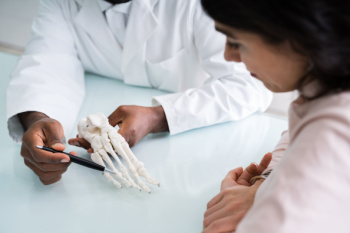
When it comes to foot and ankle health, personalized care makes all the difference. Every patient has unique needs based on their lifestyle, activity level, and medical history. A podiatrist who offers individualized care can create a treatment plan tailored specifically to you. This means better results, faster relief from pain, and a lower risk of future problems. Personalized care starts with listening. A podiatrist takes time to understand your concerns, whether you are dealing with heel pain, bunions, arthritis, or diabetic foot issues. They assess your foot structure, gait, and any underlying conditions before recommending treatment. These might include custom orthotics, footwear guidance, targeted exercises, or minimally invasive procedures. With customized treatment, patients often experience greater comfort and improved mobility. If you are having foot or ankle problems, it is suggested that you seek care from a podiatrist for a proper diagnosis and treatment appropriate to your needs.
If you are experiencing pain in the feet or ankles, don’t join the stubborn majority refusing treatment. Feel free to contact one of our podiatrists from McKinney Podiatric Associates, PA. Our doctors can provide the care you need to keep you pain-free and on your feet.
What Is a Podiatrist?
Someone would seek the care of a podiatrist if they have suffered a foot injury or have common foot ailments such as heal spurs, bunions, arch problems, deformities, ingrown toenails, corns, foot and ankle problems, etc.
Podiatric Treatment
A podiatrist will treat the problematic areas of the feet, ankle or lower leg by prescribing the following:
A common podiatric procedure a podiatrist will use is a scanner or force plate which will allow the podiatrist to know the designs of orthotics. Patients are then told to follow a series of tasks to complete the treatment. The computer will scan the foot a see which areas show weight distribution and pressure points. The podiatrist will read the analysis and then determine which treatment plans are available.
If you have any questions please feel free to contact one of our offices located in Pasadena, Baytown, League City, Houston, and Pearland,TX . We offer the newest diagnostic and treatment technologies for all your foot and ankle needs.
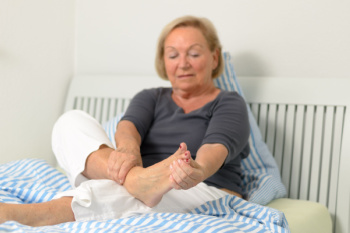
Although gout is often associated with men, it also affects women, particularly after menopause. Estrogen helps regulate uric acid levels, so its decline increases the risk of developing gout. The condition occurs when uric acid builds up in the bloodstream, forming painful crystals in the joints, including in the big toe. Risk factors include a diet high in purines, obesity, kidney disease, and certain medications that affect uric acid levels. Women with gout often experience symptoms in the toes, ankles, and knees, leading to swelling, redness, and severe pain. If left untreated, gout can cause joint damage and chronic pain, affecting mobility and quality of life. If you have pain in your big toe, it is suggested that you are under the care of a podiatrist who can provide an accurate diagnosis and treatment.
Gout is a painful condition that can be treated. If you are seeking treatment, contact one of our podiatrists from McKinney Podiatric Associates, PA. Our doctors will treat your foot and ankle needs.
What Is Gout?
Gout is a form of arthritis that is characterized by sudden, severe attacks of pain, redness, and tenderness in the joints. The condition usually affects the joint at the base of the big toe. A gout attack can occur at any random time, such as the middle of the night while you are asleep.
Symptoms
Risk Factors
Prior to visiting your podiatrist to receive treatment for gout, there are a few things you should do beforehand. If you have gout you should write down your symptoms--including when they started and how often you experience them, important medical information you may have, and any questions you may have. Writing down these three things will help your podiatrist in assessing your specific situation so that he or she may provide the best route of treatment for you.
If you have any questions, please feel free to contact one of our offices located in Pasadena, Baytown, League City, Houston, and Pearland,TX . We offer the newest diagnostic and treatment technologies for all your foot care needs.

Achilles tendinopathy is not just a runner’s problem. It can strike anyone who overworks their Achilles tendon without enough recovery. This overuse injury happens when tiny, repeated strains cause the tendon to weaken and thicken, making every step feel stiff and sore. The pain usually starts as a dull ache in the back of the heel or lower calf, especially after activity. Ignoring it can lead to worsening pain and even a rupture. Rest and targeted exercises are key. Stretching, strengthening exercises, and supportive footwear can help the tendon heal. A podiatrist may also recommend orthotics or shockwave therapy for stubborn cases. If your Achilles tendon has been nagging you for weeks, it is suggested that you see a podiatrist for treatment.
Achilles tendon injuries need immediate attention to avoid future complications. If you have any concerns, contact one of our podiatrists of McKinney Podiatric Associates, PA. Our doctors can provide the care you need to keep you pain-free and on your feet.
What Is the Achilles Tendon?
The Achilles tendon is a tendon that connects the lower leg muscles and calf to the heel of the foot. It is the strongest tendon in the human body and is essential for making movement possible. Because this tendon is such an integral part of the body, any injuries to it can create immense difficulties and should immediately be presented to a doctor.
What Are the Symptoms of an Achilles Tendon Injury?
There are various types of injuries that can affect the Achilles tendon. The two most common injuries are Achilles tendinitis and ruptures of the tendon.
Achilles Tendinitis Symptoms
Rupture Symptoms
Treatment and Prevention
Achilles tendon injuries are diagnosed by a thorough physical evaluation, which can include an MRI. Treatment involves rest, physical therapy, and in some cases, surgery. However, various preventative measures can be taken to avoid these injuries, such as:
If you have any questions please feel free to contact one of our offices located in Pasadena, Baytown, League City, Houston, and Pearland,TX . We offer the newest diagnostic tools and technology to treat your foot and ankle needs.
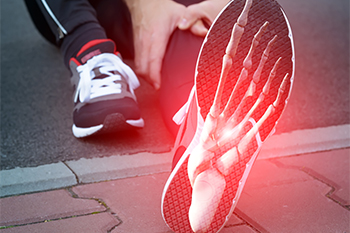
Trail running shoes are specifically designed to provide support, traction, and durability for off-road running. These shoes typically feature a more aggressive tread pattern compared to road running shoes, offering better grip on uneven surfaces like dirt, rocks, and mud. Trail shoes also provide added protection with reinforced toe caps and a thicker midsole to absorb the impact from rough terrains. Different types of trails require different shoe features. For smooth, well-maintained trails, shoes with lighter weight and moderate cushioning are ideal. For more technical and rugged trails, shoes with extra cushioning, stability, and a more robust tread are recommended. The type of terrain, whether it be rocky, muddy, or snowy, should be considered when selecting trail shoes, as each condition demands specific shoe characteristics to ensure comfort and performance. If you have sustained a foot injury from wearing the wrong running shoes, it is suggested that you consult a podiatrist who can treat various foot conditions, and guide you on what shoes to wear for your desired type of running.
If you are a runner, wearing the right running shoe is essential. For more information, contact one of our podiatrists from McKinney Podiatric Associates, PA. Our doctors can provide the care you need to keep you pain-free and on your feet.
Choosing the Right Running Shoe for Your Foot Type
To increase performance and avoid the risk of injury, it is important to choose the right running shoe based on your foot type. The general design of running shoes revolves around pronation, which is how the ankle rolls from outside to inside when the foot strikes the ground.
If you have any questions please feel free to contact one of our offices located in Pasadena, Baytown, League City, Houston, and Pearland,TX . We offer the newest diagnostic and treatment technologies for all your foot and ankle needs.
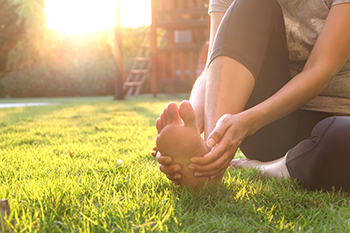
Vamp disease, also known as anterior tibial tendonitis, is a condition that affects the tendon in the lower leg, specifically the anterior tibialis tendon. This tendon is responsible for lifting the foot during walking and running. Vamp disease is characterized by pain and tenderness in the front of the ankle and lower leg, especially during physical activities like running or jumping. The pain may worsen with movement and often improves with rest. The primary cause of vamp disease is overuse or repetitive strain on the anterior tibialis tendon, commonly seen in athletes or individuals who engage in activities that involve frequent jumping, running, or quick direction changes. Wearing ill-fitting footwear or sudden changes in activity level can also contribute to its development. To avoid vamp disease, it is important to gradually increase activity intensity, wear proper footwear with good support, and allow adequate rest between workouts to prevent overuse injuries. If you have pain in this part of your foot and ankle, it is suggested that you confer with a podiatrist who can offer a proper diagnosis and effective relief solutions.
Foot Pain
Foot pain can be extremely painful and debilitating. If you have a foot pain, consult with one of our podiatrists from McKinney Podiatric Associates, PA. Our doctors will assess your condition and provide you with quality foot and ankle treatment.
Causes
Foot pain is a very broad condition that could be caused by one or more ailments. The most common include:
Diagnosis
To figure out the cause of foot pain, podiatrists utilize several different methods. This can range from simple visual inspections and sensation tests to X-rays and MRI scans. Prior medical history, family medical history, and any recent physical traumatic events will all be taken into consideration for a proper diagnosis.
Treatment
Treatment depends upon the cause of the foot pain. Whether it is resting, staying off the foot, or having surgery; podiatrists have a number of treatment options available for foot pain.
If you have any questions, please feel free to contact one of our offices located in Pasadena, Baytown, League City, Houston, and Pearland,TX . We offer the newest diagnostic and treatment technologies for all your foot care needs.
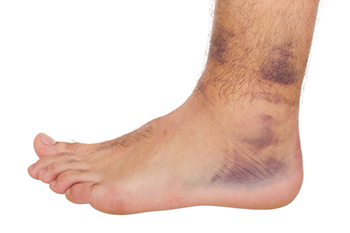
An ankle sprain might seem like a minor injury, but without proper care, it can lead to long-term instability and recurring issues. The ligaments in the ankle are designed to provide support and balance, but a sudden misstep, awkward landing, or quick pivot can overstretch or tear them. Many people assume a sprain will heal on its own, but rushing back to activity too soon can cause weakness and increase the risk of reinjury. Persistent swelling, pain, or difficulty bearing weight may indicate a more severe sprain that requires medical attention. Strengthening and balance exercises help prevent future sprains, while wearing supportive footwear adds protection. Ignoring a sprain can lead to chronic instability, making future injuries more likely. If pain lingers or mobility is compromised, it is strongly suggested that you see a podiatrist to ensure proper healing and prevent long-term damage.
Ankle sprains are common but need immediate attention. If you need your feet checked, contact one of our podiatrists from McKinney Podiatric Associates, PA. Our doctors can provide the care you need to keep you pain-free and on your feet.
How Does an Ankle Sprain Occur?
Ankle sprains take place when the ligaments in your ankle are torn or stretched beyond their limits. There are multiple ways that the ankle can become injured, including twisting or rolling over onto your ankle, putting undue stress on it, or causing trauma to the ankle itself.
What Are the Symptoms?
Preventing a Sprain
Treatment of a Sprain
Treatment of a sprain depends on the severity. Many times, people are told to rest and remain off their feet completely, while others are given an air cast. If the sprain is very severe, surgery may be required.
If you have suffered an ankle sprain previously, you may want to consider additional support such as a brace and regular exercises to strengthen the ankle.
If you have any questions please feel free to contact one of our offices located in Pasadena, Baytown, League City, Houston, and Pearland,TX . We offer the newest diagnostic and treatment technologies for all your foot and ankle needs.
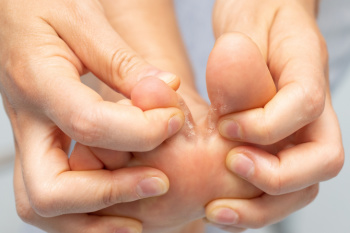
Athlete's foot, or tinea pedis, is a fungal infection that commonly affects the skin on your feet, often starting with a red, itchy, and scaly rash between the toes. This condition thrives in warm, damp environments, making places like gym locker rooms, swimming pools, and public showers prime spots for picking it up. The fungus flourishes when it comes into contact with the skin in moist conditions, such as sweaty feet trapped in damp socks or shoes. Symptoms can range from mild itching and burning to peeling skin, and in severe cases, blisters or painful ulcers. For mild cases, antifungal creams, powders, or sprays can provide relief. However, the best defense is keeping your feet clean and dry, changing socks regularly and choosing breathable footwear can make a big difference. To prevent athlete's foot, always wear shower sandals in public areas, dry your feet thoroughly after washing, and avoid sharing towels or shoes. If symptoms persist or worsen, it is suggested that you make an appointment with a podiatrist for expert treatment.
Athlete’s foot is an inconvenient condition that can be easily reduced with the proper treatment. If you have any concerns about your feet and ankles, contact one of our podiatrists from McKinney Podiatric Associates, PA. Our doctors will treat your foot and ankle needs.
Athlete’s Foot: The Sole Story
Athlete's foot, also known as tinea pedis, can be an extremely contagious foot infection. It is commonly contracted in public changing areas and bathrooms, dormitory style living quarters, around locker rooms and public swimming pools, or anywhere your feet often come into contact with other people.
Solutions to Combat Athlete’s Foot
Athlete’s foot can cause many irritating symptoms such as dry and flaking skin, itching, and redness. Some more severe symptoms can include bleeding and cracked skin, intense itching and burning, and even pain when walking. In the worst cases, Athlete’s foot can cause blistering as well. Speak to your podiatrist for a better understanding of the different causes of Athlete’s foot, as well as help in determining which treatment options are best for you.
If you have any questions please feel free to contact one of our offices located in Pasadena, Baytown, League City, Houston, and Pearland,TX . We offer the newest diagnostic and treatment technologies for all your foot and ankle needs.